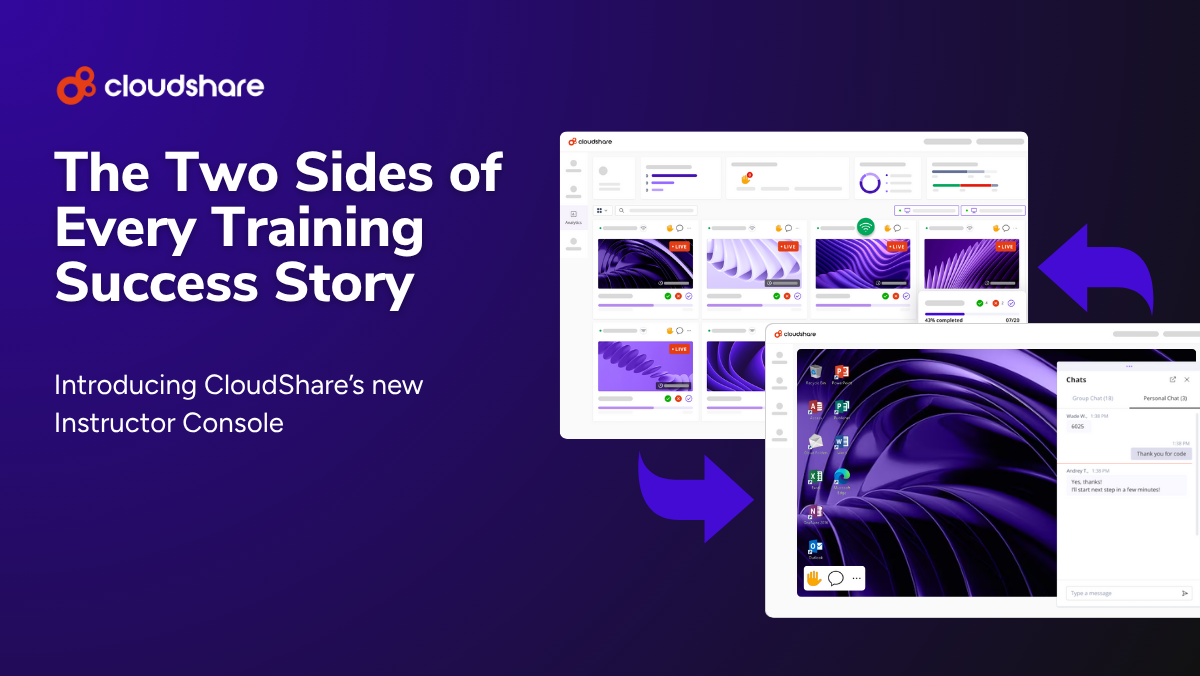
Remote training software has come a long way in recent years, largely by necessity. We’ll spare you the details. We’ve spent enough time discussing the pandemic and its impact on the workplace.
Instead, let’s talk about remote training — specifically, how you can use virtual IT labs to get the most out of your remote and hybrid training initiatives.
What is Virtual Lab Software?
A virtual training lab is a cloud-based environment that facilitates hands-on education rather than passive learning. The lab software creates a simulated non-production version of a digital workspace. This virtual environment is immersive and fully interactive, allowing trainees to experiment and practice without impacting real-world systems.
You can also use a virtual lab to run training simulations, giving participants vital experience of scenarios that can’t be safely replicated in production environments. In the cybersecurity field, where virtual labs are widely used, these scenarios include everything from ransomware attacks to catastrophic hardware failure.
The best virtual lab software typically includes:
- Well-designed UX/UI
- Virtual sandboxes
- Over-the-shoulder access for instructors
- Automatic AI-powered grading, real-time feedback, and workflow automation
- Content authoring software or the capacity for such integrations
- Comprehensive reporting and analytics
- Security features include Single Sign-On (SSO), multi-factor authentication, and strong encryption
- Flexible, scalable, and reliable cloud infrastructure
Benefits of a Cloud Virtual Lab
Virtual labs are ideal for building confidence. Think of them like a foam pit for budding gymnasts. The freedom to fall — to fail — encourages them to push themselves to the limits of their abilities.
Hands-on learning also improves both learner engagement and knowledge retention. Those gymnasts don’t just want to watch videos of other people’s routines. They want to get up on those parallel bars. And they want to activate their muscle memory — to teach their bodies new skills so that they become second nature.
Maximizing the Effectiveness of Your Virtual Lab Environment
Even the best training software falls short if you don’t use it effectively. Apply the following best practices to prevent that from happening.
Start By Defining Your Objectives
A successful training initiative starts with a concrete plan. Define your audience, core materials, and learning objectives at the outset. You may be training your colleagues, customers, or a combination of both.
Think about what you want to achieve on an organizational level and what you want each trainee to accomplish through your training.
Use this information to start developing your lab by defining the exercises learners will complete. As you do so, think about how you’ll measure progress.
As well as pure training metrics such as engagement and course completions, consider the bigger picture: key performance indicators for the company, such as reduced time to value for customers or increased employee productivity.
Establishing clear links between training KPIs and business success is challenging. As the old saying goes, correlation doesn’t necessarily mean causation. But if your courses are hitting all the right notes while sales, product adoption, and customer satisfaction are also up, you’ve got the basis of a solid case for the success of your efforts.
Understand Where Virtual Dovetails with Physical
Compared to classroom-based learning, virtual training has clear advantages in terms of interactivity and engagement potential.
However, certain elements may still be best suited to traditional media, such as worksheets and slideshows. Think about the overall rhythm of the course: switching regularly between physical assets, audio-visual material, and virtual labs can help to keep your learners fresh and receptive to new learnings.
Remember the Real World
Keep your virtual training content concise and to the point. Someone participating in a remote training program is likely surrounded by distractions.
In the office, they’ll likely have multiple messaging apps on the go, and if they’re working from home, the temptation of another short break is ever-present. Short and sweet is the name of the game.
Get Granular
You’ve already defined your core KPIs, which you’ll use to measure your training program’s overall effectiveness. There’s more to training analytics than that, though.
How exactly do people engage and interact with your training content? What times of day do they prefer for self-paced learning? How does performance vary between virtual instructor-led training and self-paced? How many people abandon their training, and at what point do they typically quit?
Measuring and monitoring your trainees allows you to:
- Determine usability bottlenecks and knowledge gaps.
- Provide participants with real-time performance feedback.
- Proactively reach out and assist participants who are struggling.
- Allow high-flying learners the freedom to forge ahead.
- Identify potential subject matter experts or product champions.
Test, Optimize, and Adjust
No training program is perfect — which is why continuous improvement must be your mindset. Every new training iteration is an opportunity to test something new or optimize something old. Every participant gives you the opportunity to adjust.
Embrace those opportunities. Don’t simply examine metrics — reach out to participants. Ask them if there’s anything they felt was missing from your training, find out what they liked, and discuss what they disliked.
Use those insights to build a remote training program that grows alongside your business.
Ready to Explore AI, Technical Training, and More?
You now understand what to look for in a virtual IT lab and how to develop and improve a remote training program. Next, explore remote training methods that leverage artificial intelligence in How to Use ChatGPT for Training Content Creation. Also put these two on your reading list: Five Key Elements of an Effective Training Environment and 5 Best Practices for Technical Training.




